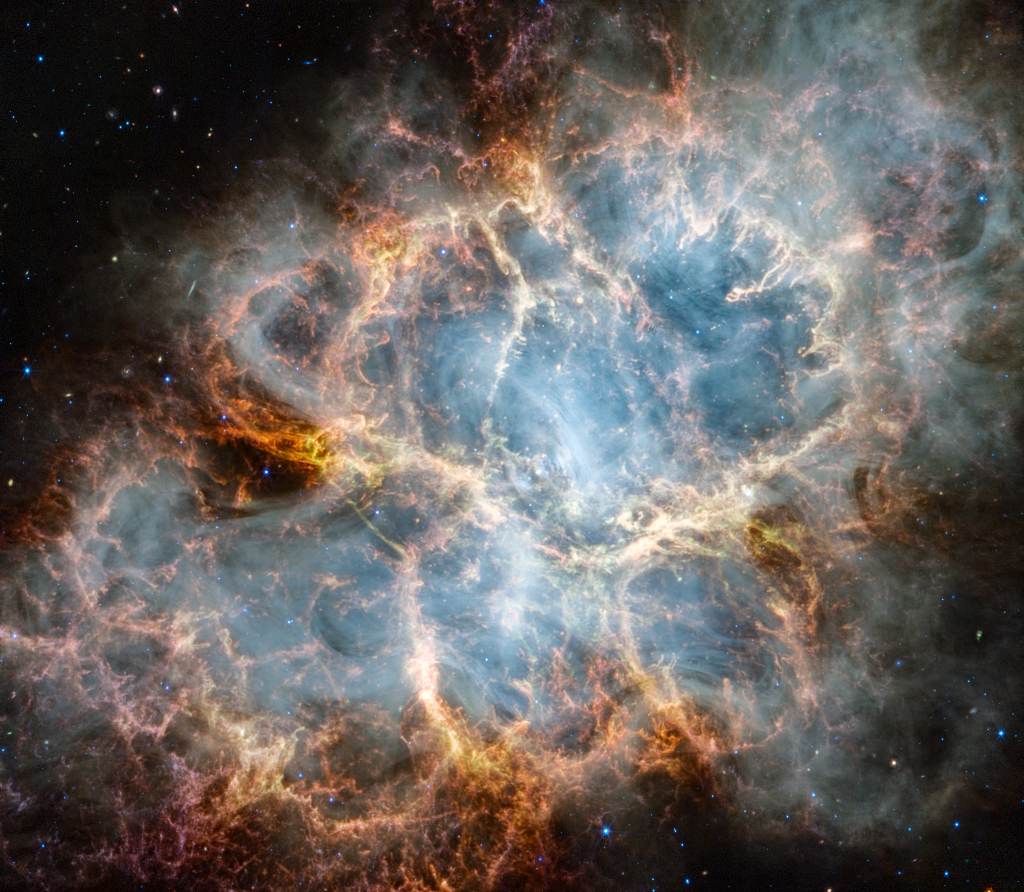2023年11月9日
M1: The Crab Nebula
Image Credit: NASA, ESA, CSA, STScI; Tea Temim (Princeton University)
Explanation: The Crab Nebula is cataloged as M1, the first object on Charles Messier’s famous 18th century list of things which are not comets. In fact, the Crab is now known to be a supernova remnant, debris from the death explosion of a massive star witnessed by astronomers in the year 1054. This sharp image from the James Webb Space Telescope’s NIRCam (Near-Infrared Camera) and MIRI (Mid-Infrared Instrument) explores the eerie glow and fragmented strands of the still expanding cloud of interstellar debris in infrared light. One of the most exotic objects known to modern astronomers, the Crab Pulsar, a neutron star spinning 30 times a second, is visible as a bright spot near the nebula’s center. Like a cosmic dynamo, this collapsed remnant of the stellar core powers the Crab’s emission across the electromagnetic spectrum. Spanning about 12 light-years, the Crab Nebula is a mere 6,500 light-years away in the head-strong constellation Taurus.
Tomorrow’s picture: UHZ1
M1:蟹状星云
影像提供: NASA, ESA, CSA, STScI; Tea Temim (Princeton University)
说明: 编录号为M1的蟹状星云,是梅西耶在18世纪编辑的著名“非彗星”星表里的第一号天体。如今的我们当然知道,蟹状星云是个超新星遗迹,为大质量恒星死亡爆炸后所留下来的碎片云,而(北宋的)天文学家于西元1054年有第一手的观测记录。这幅来自韦伯太空望远镜的近红外与中红外相机的清晰的影像,探索了这团仍然不停扩张的星云内之魅异辉光及纠结云气丝。影像中心附近的亮斑,是一颗每秒自转30次、名为蟹状星云波霎的中子星,为现代天文学家所知最奇特的天体之一。这颗星核崩塌后所孑遗的天体,行为像一部宇宙级的发电机,驱动蟹状星云发出横跨所有电磁波段的辐射。跨幅约有12光年的蟹状星云,位在金牛座方向6,500光年远之处。
明日的图片: UHZ1







